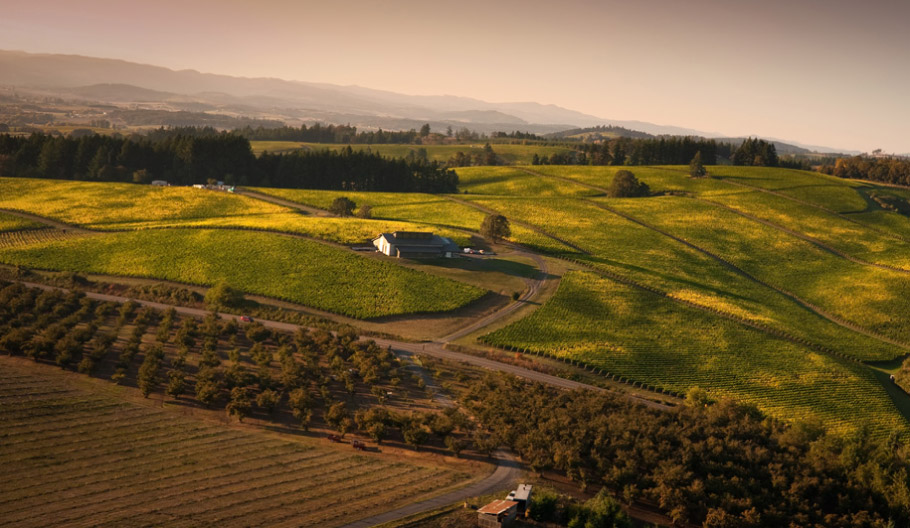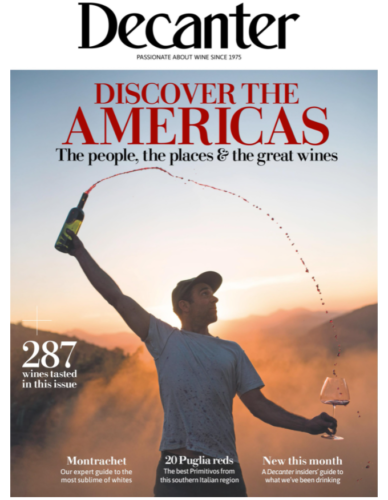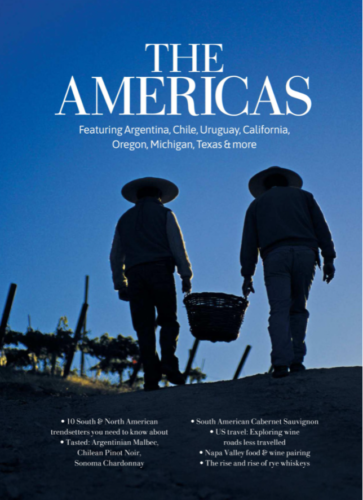News & Reviews
Posted on February 17, 2022 in Press, Videos
A conversation with winemakers Ken Wright & Cathy Corison, moderated by Jordan Mackay.
Click Here to Watch Virtual Tasting
Join Ken Wright and Cathy Corison, of Corison Winery, for a conversation about their 40+ years of winemaking experience, fun stories about the start to their careers, and insight about their respective wine regions. This conversation between Ken and Cathy is moderated by James-Beard-award-winning writer, Jordan Mackay, a specialist in wine, spirits, and food. Jordan’s work has appeared in Food & Wine, The New York Times, San Francisco Chronicle, Wine and Spirits and many others.
As you may have read, both Cathy Corison and Ken Wright were featured winemakers in October’s Decanter article, by Jordan Mackay— North American Trendsetters: five modern-day pioneers. Which inspired this collaborative virtual event, offered first exclusively to Ken Wright Cellars and Corison Club members with additional shared club benefits.
With Ken’s 44th vintage under his belt, we think it’s pretty awesome to still be considered a trendsetter in our industry. The environment at Ken Wright Cellars really is one of constant research, innovation and drive to do better at our craft.
Cathy Corison, owner and winemaker of Corison winery, and a fellow University of California alumna, has carved her own self-made path in California. Her secrets to success— beyond winemaking skill— are focus and integrity. Since her first inclinations toward wine as an undergraduate in college, she’s taken her own road, and now countless others are following the trail she blazed.
A special thank you to the team at Corison Winery and to Jordan Mackay for this fun collaboration!
To shop the wine Ken is tasting in the video, our 2019 Savoya Vineyard Pinot Noir, click here!
Wine Spectator Reviews 2019 AVA Series Pinot Noir
Posted on January 6, 2022 in Reviews
“The issue’s most impressive wines. Includes top-scorers and wines that represent optimal purchases
based on their combination of score, price and availability.” — December 2021 issue

2019 Eola-Amity Hills AVA Pinot Noir
93 points
“Structured and full of tension, this Pinot captures what Eola-Amity is all about, featuring handsome notes of blueberry and dark cherry laced with savory minerality and dusky spices, finishing with medium-grained tannins. Drink now through 2030. 610 cases made.” — Tim Fish, Senior Editor

2019 Yamhill-Carlton AVA Pinot Noir
93 points
“Expressive and detailed, featuring a vibrant core of acidity and handsome tannins framed by cherry and tart blueberry flavors, with dusky spice accents that build tension toward refined tannins Drink now through 2030. 581 cases made.” — Tim Fish, Senior Editor
Decanter: 10 South & North American Trendsetters You Need to Know About
Posted on September 14, 2021 in Press, Reviews
Page 29 | October 2021 Issue | Decanter
Download PDF of Article
Ken Wright
OREGON
Wright’s story is prototypically American: in spite of a lack of pedigree and finances, he achieved his success in wine through talent, hard work, common sense, courage and access to lands with unrealized potential. What makes him a vital trendsetter in Oregon and in American Pinot Noir is that his triumphs have not only benefited his own cause, but have had a powerful impact on a nation of burgeoning winemakers and wine lovers.
Arriving in Oregon’s restless climate in 1986, he found an economy here growers sold grapes by the tonne, making it near-impossible to get them to drop fruit. So he used his significant powers of persuasion to convince growers to both charge by the acre and follow his farming protocols.
Such shifts may seem trivial today, but Wright’s actions helped spark the major leaps in quality and consistency that catapulted Oregon to its status as a top Pinot region. Likewise, he was among the first to bring sorting tables and dry ice into the winery in Oregon.
Just as crucially, Wright has also been a leader in promoting and mapping Oregon’s terroir.  Decades before every vintner seemingly began hiring geologists to map their properties, Wright was professorially lecturing and scrawling on chalkboards to explain how subduction, volcanism and ancient flooding created the distinct flavours of Oregon Pinot Noir. Connecting these flavours to the underlying geology became his passion (while popularizing the mantra ‘mother rock’), leading him to pave the way for American single-vineyard Pinot Noir – of which he released as many as a dozen separate wines in a vintage.
Decades before every vintner seemingly began hiring geologists to map their properties, Wright was professorially lecturing and scrawling on chalkboards to explain how subduction, volcanism and ancient flooding created the distinct flavours of Oregon Pinot Noir. Connecting these flavours to the underlying geology became his passion (while popularizing the mantra ‘mother rock’), leading him to pave the way for American single-vineyard Pinot Noir – of which he released as many as a dozen separate wines in a vintage.
His unrelenting belief in terroir resulted in what will likely be his most durable legacy; the create in 2005 of six sub-appellations in the northern Willamette Valley. Wright’s energy and enthusiasm overcame the skepticism of fellow wine-growers (who thought the demarcation premature). But today no one questions the wisdom of the act because, as Wright has repeatedly shown, shaping the way one thinks about vineyards and earth shapes the wines themselves in a way that benefits everyone.
Ken Wright, Pinot Noir, Willamette Valley, Oregon, USA 2019- 90
US$23-$34 Raspberry and cherry lead the way, joined by hints of vanilla and subtle aromatic spice notes. There’s lovely weight in the mouth, accompanied by finely honed tannins. Drink 2021-2026. Alc 13.5%
—Jordan MacKay
The Ultimate Guide to Yamhill-Carlton AVA
Posted on June 11, 2021 in PressBy Erin James | Sip Magazine
The origin story of the Yamhill-Carlton AVA in Oregon’s Northern Willamette Valley is more intricate and involved than just its 2004 establishment. It’s more than the low ridges that surround the two towns of Yamhill and Carlton in the shape of a horseshoe, more than the North Yamhill River that courses through the rich agricultural land, the forestry encasing it, the Coast Range’s rain shadow coverage or even the ancient marine soils.
This story is about the right plant in the right place. The tale begins in 1995 when the burgeoning collection of Northern Willamette Valley winemakers, grape growers and community members came together to create six sub-appellations of their own.
“Any time you’re trying to create anything of this magnitude, there is endless strife to do it and the fact that we pulled it off is amazing,” says Ken Wright, proprietor and winemaker of acclaimed Ken Wright Cellars, who was instrumental in writing the FDA proposal for the six regions to receive individual designation. “We came together to identify the world-class parts of the Northern Willamette Valley as we were seeing different qualities coming from the different regions.”
In their experience of farming and producing wines in these neighboring areas, the community of vintners concluded that each region’s distinctly different soil material resulted in producing distinctly different wines. Volcanic soil material, such as that found in the Dundee Hills, would produce Pinot Noir that had a red fruit–focused profile, with strawberry, cherry and raspberry. In Eola-Amity Hills, which is also volcanic in its soil, they found darker fruits like cassis, blackberry, blueberry and black cherry. In the old ocean bed with marine sediment of Yamhill-Carlton, Wright says a divergent, savory profile emerged with anise, clove, tobacco, cedar and fresh-turned earth.
Wright explains that the source of these regional differences isn’t the soil, per se, but the soil series — the entire profile that encompasses the soil, the root system and the parent material, or “mother rock.” In Yamhill-Carlton, that ancient marine mother rock — created 200 million years ago with the evolving coastline — is the base material that contributes to what Wright calls a “treasure trove of trace elements,” such as magnesium, potassium, calcium, iron and copper that contribute to its identity of place.
“Those trace elements provide health to the plant, but in our world what’s equally important is whatever trace elements below the soil will end up being the influence that creates the profile of that wine and that place,” Wright details. “As farmers, we hope to be that deep into the mother rock. You have to be farming in that way to have the right populations of microbiology to deliver trace elements. We need those aerobic, microbial populations to be successful, we need them to create wines that truly connect us to place.”
Wright likens Northern Willamette Valley Pinot Noir to San Marzano tomatoes, the famed plum tomato variety originally from the small Italian town of San Marzano sul Samo, grown in volcanic soil in the shadow of Mount Vesuvius. “San Marzano tomatoes are amazing because that plant found its perfect home,” Wright says. “We have that here, this very small area of the Northern Willamette Valley that covers all of these AVAs, this part of the world was just waiting for Pinot Noir to be planted here.”
For Pinot Noir, and other varieties grown in the Yamhill-Carlton AVA, marine sediment makes up the soil series and builds the character of the wine. Wright says that coarse, granular, well-drained mother rock loses moisture as a result of its composition, therefore influencing the vine to ripen earlier than a region with volcanic material — a bonus for growers and winemakers as this can mean avoiding a lot of fruit-destroying weather issues, like rain. That, among a few other reasons, is why seven of the 13 single-vineyard Ken Wright wines hail from this region.
“I love all the regions but I love this profile,” the winemaker says of the AVA. “When we are perfectly ripe, we tend to have a little bit less acidity than the volcanic [sediment areas] so the wines here tend to be lush and enjoyable right out of the gate. We tend to have both blue and red fruit, a beautiful, seamless marriage of the two. Underneath that, there’s cocoa, tobacco, cedar, baking spices and a fresh earthiness; lots of floral qualities, but not herbaceous — it’s more like violet and rose. The wines tend to be quite complex and texturally very enjoyable.”
Dig into the ancient marine soil series of Yamhill-Carlton by way of these seven wines — each of which found their place in this unique Northern Willamette Valley AVA.
Ken Wright Cellars 2017 Savoya Vineyard Chardonnay
Ken Wright, a bona fide Master of Pinot Noir, colors outside that varietal box just a few times to showcase what also grows beautifully in Yamhill-Carlton: Chardonnay clone Dijon 548 planted on half an acre at Savoya Vineyard. Fermented and aged in French oak barrels, the wine is brilliant, clean and vibrant. A lovely glycerin quality peaks out with beeswax on the nose and a mouth-filling texture on the palate, while honeycomb, white flower, guava and mineral rest on bright acid. | $55 Click Here to Purchase
Ken Wright Cellars 2017 Savoya Vineyard Pinot Noir
Tasting Ken Wright’s wines back-to-back draws a parallel of sophistication between them, a consistency that exudes supple texture, savory qualities and a freshness that allows the wines to be enjoyed now, or later. Spice and floral notes bloom in front of the red fruit in this wine, but make way for smoked cedar, mineral, cola, blackberry and more of that red fruit. Complex, smooth and with brilliant clarity. | $62.50 Click Here to Purchase
Wine Enthusiast: 10 Vineyards Behind the World’s Most Famous Wines
Posted on March 10, 2021 in Press
Shea Vineyard
Because of Burgundy’s storied pedigree, Pinot Noir is almost as noble as grapes come. And Pinot Noir in the States is gaining a foothold. Even Burgundian denizens praise Oregon’s Willamette Valley for its great terroir for Pinot production.
The region’s Mecca is often considered to be Shea Vineyard, a 290-acre property in Yamhill County renowned for its sedimentary sandstone soil. Shea dedicates 149 acres to Pinot Noir and six acres to Chardonnay.
Proprietor Dick Shea supplies grand cru-quality grapes to some of the most vaunted and well- known Oregon and California wineries.
Notable Producers: Bergström, Ken Wright Cellars, Shea Wine Cellars, Winderlea






